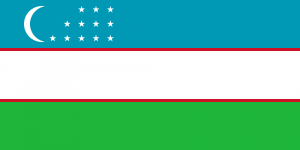Difference between revisions of "Language/Northern-uzbek/Vocabulary/Numbers-and-Counting"
m (Quick edit) |
m (Quick edit) |
||
| Line 110: | Line 110: | ||
[[Category:0-to-A1-Course]] | [[Category:0-to-A1-Course]] | ||
[[Category:Northern-uzbek-0-to-A1-Course]] | [[Category:Northern-uzbek-0-to-A1-Course]] | ||
==Related Lessons== | |||
* [[Language/Northern-uzbek/Vocabulary/Countries|Countries]] | |||
* [[Language/Northern-uzbek/Vocabulary/Ferghana-Valley-Dialect|Ferghana Valley Dialect]] | |||
* [[Language/Northern-uzbek/Vocabulary/Science-and-Technology|Science and Technology]] | |||
* [[Language/Northern-uzbek/Vocabulary/Family-and-Relationships|Family and Relationships]] | |||
* [[Language/Northern-uzbek/Vocabulary/Languages|Languages]] | |||
* [[Language/Northern-uzbek/Vocabulary/Food-and-Drink|Food and Drink]] | |||
* [[Language/Northern-uzbek/Vocabulary/Transportation|Transportation]] | |||
* [[Language/Northern-uzbek/Vocabulary/Shopping-and-Money|Shopping and Money]] | |||
* [[Language/Northern-uzbek/Vocabulary/Animals|Animals]] | |||
{{Northern-uzbek-Page-Bottom}} | {{Northern-uzbek-Page-Bottom}} | ||
Revision as of 21:51, 14 March 2023
In this lesson, we will learn how to count from 1 to 100 in Northern Uzbek and use numbers in everyday situations.
Basic Numbers
Here are the basic numbers in Northern Uzbek:
| Northern Uzbek | Pronunciation | English |
|---|---|---|
| 1 | bir | one |
| 2 | ikki | two |
| 3 | uch | three |
| 4 | to'rt | four |
| 5 | besh | five |
| 6 | olti | six |
| 7 | yetti | seven |
| 8 | sakkiz | eight |
| 9 | to'qqiz | nine |
| 10 | o'n | ten |
Note that the pronunciation of Northern Uzbek may vary slightly depending on the region of Uzbekistan where it is spoken.
To form numbers from 11 to 19, you simply add the basic number to the word for "ten". For example:
- 11: o'n bir
- 12: o'n ikki
- 13: o'n uch
- 14: o'n to'rt
- 15: o'n besh
- 16: o'n olti
- 17: o'n yetti
- 18: o'n sakkiz
- 19: o'n to'qqiz
To form numbers from 20 to 99, you first say the multiple of ten, followed by the basic number. For example:
- 20: yigirma (literally, "two tens")
- 21: yigirma bir
- 22: yigirma ikki
- 30: o'ttiz (literally, "three tens")
- 31: o'ttiz bir
- 40: qirq (literally, "four tens")
- 50: ellik (literally, "five tens")
- 60: oltmish (literally, "six tens")
- 70: yetmish (literally, "seven tens")
- 80: sakson (literally, "eight tens")
- 90: to'qson (literally, "nine tens")
To form numbers from 100 to 999, you first say the number of hundreds, followed by the multiple of ten (if any), followed by the basic number. For example:
- 100: yuz
- 101: yuz bir
- 125: yuz yigirma besh
- 200: ikki yuz
- 300: uch yuz
- 400: to'rt yuz
- 500: besh yuz
- 600: olti yuz
- 700: yetti yuz
- 800: sakkiz yuz
- 900: to'qqiz yuz
Note that when multiples of 100 are used with basic numbers, they are connected using the word "va". For example:
- 105: yuz besh va besh
- 824: sakkiz yuz yigirma to'rt
Counting in Everyday Situations
Now that we know the basic numbers in Northern Uzbek, let's practice using them in everyday situations:
- When giving your phone number: Telefon raqamim o'n ikki to'qqiz sakkiz besh, meaning "My phone number is 12-98-85."
- When asking for someone's age: Yoshingiz necha? meaning "How old are you?"
- When paying for something: Sakkiz ming so'm, meaning "Eight thousand soms."
- When telling the time: Soat oltida, meaning "At six o'clock."
Practice these phrases until you feel comfortable using numbers in Northern Uzbek in a variety of everyday situations.
Conclusion
In this lesson, we learned how to count from 1 to 100 in Northern Uzbek, as well as how to use numbers in everyday situations. Practicing these phrases will help you build your vocabulary and communicate more effectively with Northern Uzbek speakers.
Related Lessons
- Countries
- Ferghana Valley Dialect
- Science and Technology
- Family and Relationships
- Languages
- Food and Drink
- Transportation
- Shopping and Money
- Animals
